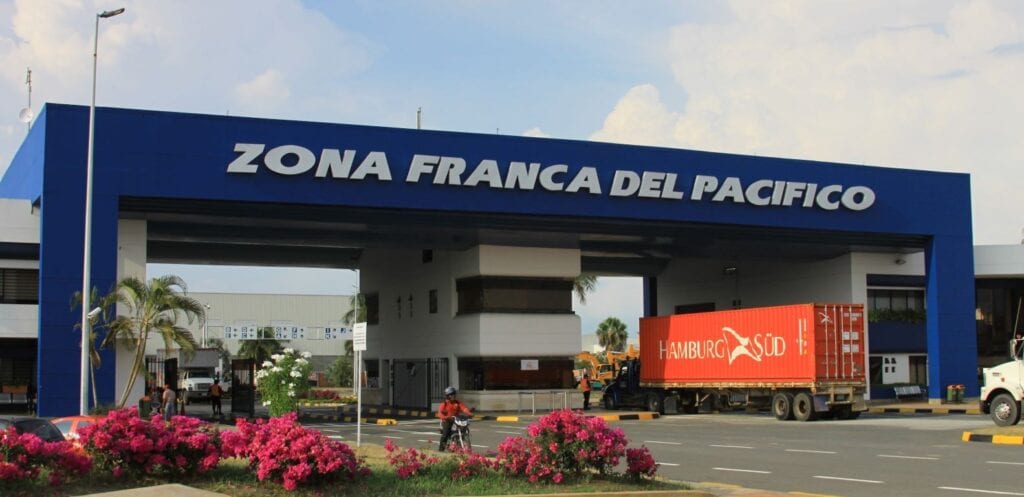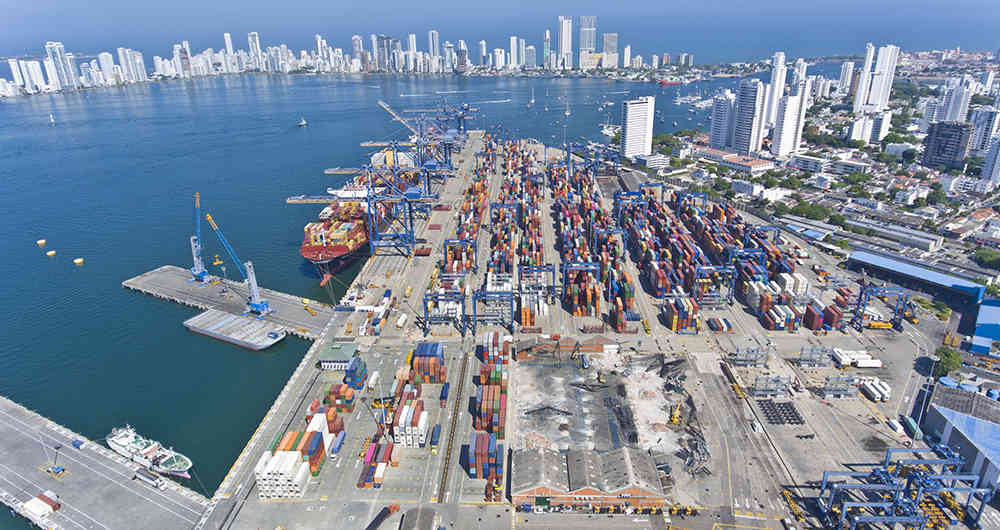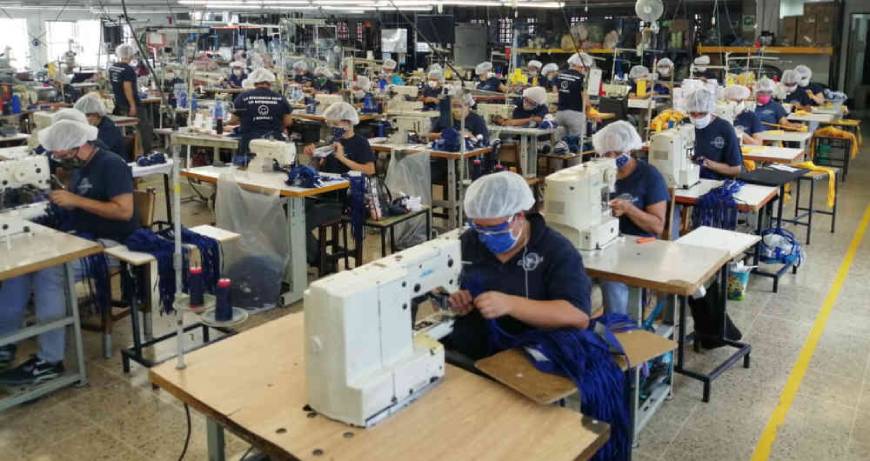Export to Colombia
Colombia began its economic opening in the 1990s and strengthened its trade relations with Europe in 2010, following the signing of the Trade Agreement between the European Union and Colombia, Ecuador and Peru. Since then, trade between Colombia and Europe has increased significantly, making Spain the main recipient of Colombian exports and the third largest exporter to Colombia in Europe.
According to data from the International Monetary Fund, Colombia is the fourth largest economy in Latin America, behind Brazil, Mexico and Argentina, with a GDP of 719 billion dollars (MUSD) in 2020, although from the perspective of GDP per capita it drops to ninth position, behind Panama, Chile, Uruguay, Argentina, Costa Rica, Mexico, Dominican Republic and Brazil.
If the point of view is reduced only to South America, according to its GDP, Colombia ranks third, after Brazil and Argentina, and fifth in GDP per capita, after Chile, Uruguay, Argentina and Brazil.
It is worth noting that the Colombian economy was the only one that grew in the first quarter of 2020 (+1.1%), together with Chile (+0.4%), before the devastating effects of the covid-19 pandemic began to be felt. Also in 2019, the Colombian economy grew by 3.3 %, making it the fastest growing country in Latin America that year.
Other data that highlight the significance of Colombia are its size, the fourth largest in South America, and with a major plan to modernize its road and rail infrastructure, and its population, with just over 49.5 million inhabitants, is the third largest in Latin America, although about 25% of its inhabitants are below the poverty line.
A country open to foreign trade
Colombia is a member of the World Trade Organization (WTO) and the General Agreement on Tariffs and Trade (GATT). It is also a member of the Andean Community, along with Ecuador, Peru and Bolivia, plus five associate countries (Argentina, Brazil, Chile, Paraguay and Uruguay), whose goals include fostering the customs union and promoting the region’s development through integration and economic and social cooperation.
In the early 1990s, Colombia also began to open up its economy and trade, lowering tariffs considerably in order to increase its imports, opening the country to the entry of products from other countries. It has signed twelve free trade agreements with more than 48 countries and is negotiating with other countries with the aim of increasing its exports and promoting the arrival of foreign investment in the country.
Colombia strengthened its trade relations with Europe in 2010, when it signed the European Union Trade Agreement with Colombia, Ecuador and Peru, which involved eliminating tariffs and other trade barriers and facilitating trade through, for example, more simplified customs procedures.
Since then, Colombia’s trade with Europe has been growing and, with 2019 data, Europe (EU-28) is the second largest recipient trading partner for Colombian exports, with 11.7% of the total, behind only the United States (26.5% of the total), and the third largest recipient trading partner for its imports, with 13.5% of the total, behind the United States (25.5% of the total) and China (20.6% of the total).
Colombia’s exports reached a value of 41,769 MUSD in 2018 (11 % more than in the previous year), with the main exported products being: mineral fuels and oils, coffee, tea, mate and spices, precious stones and metals, plastics and their manufactures, live plants and floriculture products, and unpreserved fruits.
As for imports, the value they reached in 2018 was MUSD 51,232 (also 11 % more than in the previous year) and mainly consisted of machinery and mechanical appliances, electrical appliances and equipment, motor vehicles and tractors, mineral fuels and oils, plastic and its manufactures, pharmaceuticals, organic chemicals, iron and steel, cereals, and optical and medical devices.

Spain, Colombia’s commercial ally
Spain is an important trading partner of Colombia, a reality that is reinforced by the investments of Spanish companies in this country which, in 2019, according to the Bank of the Republic of Colombia, amounted to just over 2,400 MUSD, only behind the United States (2,685 MUSD).
The number of Spanish companies installed in Colombia has also grown considerably over the last decade, from 160 in 2001 to more than 600 in 2019, especially in sectors such as infrastructure, information technology and services.
Reciprocally, of Colombia’s total investments abroad, 37 % of them are made in Spain (1,194 MUSD).
These data parallel the evolution of bilateral trade between the two countries. According to ICEX data, in 2019, Spanish exports to Colombia were worth 1,026 MUSD (976 MUSD in 2018), while Spanish imports from Colombia were 441 MUSD, well below the 939 million euros in 2018.
In the European context (EU-28), Spain is the main recipient of Colombian exports, receiving 2.8% of total goods arriving in Europe. In terms of imports that Colombia receives from Europe, Spain is the third largest importer of goods, with a share of 1.9 % of the European total, behind Germany (4.2 %) and France (2.3 %).
Although Spanish exports to Colombia are highly diversified, the most important exports are machinery and mechanical appliances, motor vehicles and tractors, pharmaceuticals, clothing and electrical appliances and equipment.
On the other hand, Spain imports from Colombia mainly fuels, minerals, slag and ash, aircraft, and machinery and mechanical appliances.
But Colombia is a country that presents other opportunities for Spanish export companies. According to the Spanish Economic and Commercial Office in Bogota, engineering services, sectors related to infrastructure and renewable energies, capital and technological goods for local industry, and agri-food and consumer products aimed at the middle class are of greatest interest.

What should you know when exporting to Colombia?
According to the World Bank, Colombia is an optimal country for doing business in Latin America, ranking 67th in the Doing business 2020 ranking.
This evolution, together with the increase in trade operations between Colombia and other countries in the American continent, as well as with others in Europe and Asia, led the country to initiate a modernization of its customs procedures, putting into service the so-called Foreign Trade Single Window (VUCE, for its acronym in Spanish). Its function is to harmonize the requirements, procedures and documents demanded by the entities involved in import and export operations..
Likewise, Colombia’s National Tax and Customs Directorate (DIAN) has made a significant effort, especially in terms of digitalization and telematic procedures, connecting the 165 places authorized for the entry and exit of goods. Through its ports, airports, border crossings and river docks, in 2019, imports worth MUSD 52,700 and exports worth MUSD 39,500 passed through.
Although exporting to Colombia does not present significant difficulties, it is convenient to keep in mind that the exporting company must be registered with the national trade authorities, as well as be registered with the DIAN and the VUCE. Likewise, depending on the product or merchandise to be introduced, it must know and comply with its regulations or restrictions and, on the other hand, the Colombian importer must have a license and be registered in the Import Registry.
Finally, the exporting company must have all the required documentation, the most important of which are: the commercial invoice, the certificate of origin and other certificates, such as the phytosanitary (for products of plant origin) or sanitary (for products of animal origin and live animals), the transport documents, the packing list and the export SAD.
In this sense, Cargo Flores’ services as a freight forwarding company and as an authorized economic operator (AEO) make it possible to solve export and import formalities and minimize border controls. Cargo Flores’ services provide exporting and importing companies with significant savings in time and handling, inspection and transportation costs in the logistics chain of foreign trade with Colombia.







